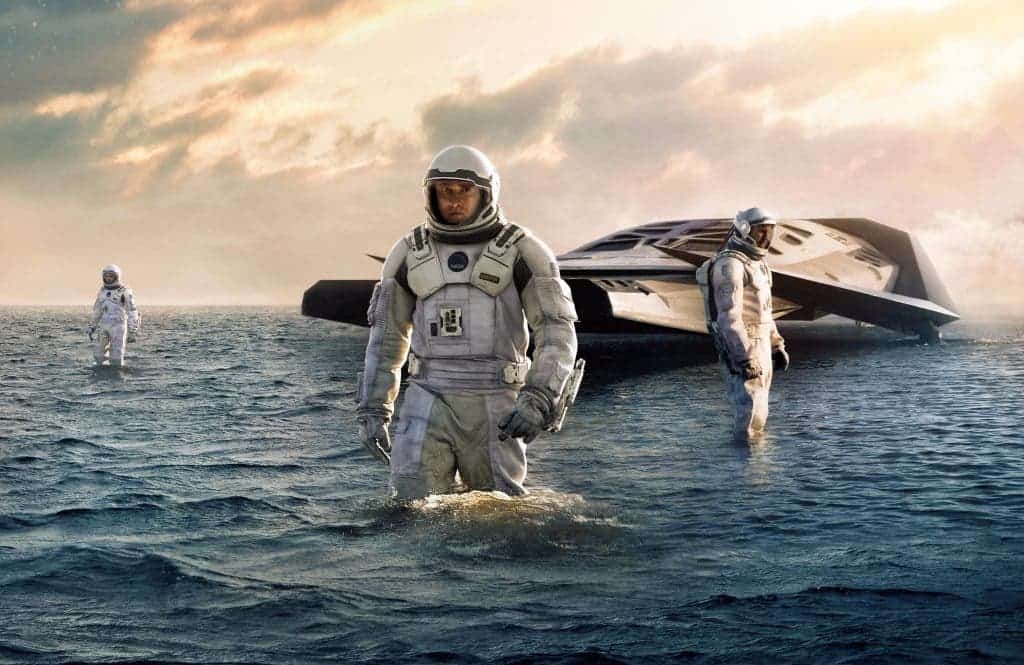This is a guest post by Dave Syndergaard, Assistant Professor of Space Studies, American Public University. The following article is Part 2 of a two-part series. Read Part 1.
When Hollywood makes a movie set in space, the science in the movie may or may not be based in reality. Part 1 of this series discussed the space science “Armageddon” and “Gravity.” This article critiques Hollywood’s depiction of space in “The Martian” and “Interstellar,” as well as space sound and movement.
The Martian
“The Martian” is one of my favorite space movies It’s pretty accurate, but not flawless.
[Spoiler Alert: If you haven’t seen the movie yet (shame on you), then you might want to skip this part.]
First, the movie shows a giant windstorm on Mars that causes the return ship to rock violently on its supports. The atmosphere of Mars is about 1% as dense as Earth’s atmosphere.
A huge windstorm on Mars would feel like a gentle summer breeze to us. It certainly wouldn’t cause a large, heavy rocket to move.
Second, Mars doesn’t have a protective magnetosphere because there’s no planetary magnetic field. As a result, high-energy galactic cosmic rays (GCRs) and charged particles from the sun hammer the surface of Mars.
The movie makes no mention of how the astronauts were protected from radiation. Damon’s character would have been fried or at least gotten cancer long before his rescuers arrived.
Third, the “Iron Man” rocket thing Watney does with his spacesuit by ripping a hole in his glove and using it like a rocket was hilarious. I teach rocket propulsion and orbital mechanics. That part of the movie made me roll my eyes so hard I gave myself a small headache.
[ALSO READ] NASA wants to grow potatoes on the red planet. Just like Mark Watnet from ‘The Martian’
Other problems, like the fact that hydrazine is too toxic for any human exposure, were easy to overlook. Overall, the movie was awesome.
Interstellar
“Interstellar” was another recent movie that was fun to watch and not too bad, as far as science goes.
The movie uses a wormhole as a space transportation system. Traveling though wormholes (the technical term is “Einstein-Rosen Bridge”) has been a plot device in science fiction movies and stories for decades. But there are several problems with the concept as a transportation mechanism.
The first problem is size. Primordial wormholes are predicted to exist on microscopic levels, about 10–33 centimeters. It’s possible that as the universe has expanded, some wormholes may have stretched to larger sizes. Another problem is stability. Einstein-Rosen wormholes would collapse quickly.
[ALSO SEE] Interstellar movie is helping scientists model REAL black holes
Recent research suggests a wormhole containing “exotic” matter (not be confused with dark matter or antimatter) could stay open and stable for longer periods of time. I wouldn’t take the chance on these wormholes staying around long enough to travel through, however.
Other Movie Mistakes Involve “Real” Sound in Space and Spacecraft Movement
That “sound in space” thing in movies and TV shows has bothered me since I was a teenager and learned that sound waves can’t propagate through space.
Most science fiction writers and screenwriters take “poetic license” with space sound to make a scene more exciting. For sound to travel, it needs something with molecules for the sound to travel through.
On Earth, sound travels to your ears by vibrating air molecules. In the large empty areas between stars and planets, there are no molecules to vibrate and no sound.
There’s also the issue of how spacecraft move around in space. The notion of spacecraft “yanking and banking” in space is nonsense.
Moving around in Earth’s atmosphere is very different than maneuvering in space.In space, there isn’t any air for wings and rudders to push against. Spacecraft movement is governed by gravitational pull and by pushing propellant through directional nozzles.
Here’s my advice: Go enjoy all of these movies, as well as future space movies. But employ your critical thinking skills.
About the Author: Dave Syndergaard is a professor of Space Studies at American Public University. His degrees are in electrical and systems engineering. Dave is a retired Air Force officer with experience in satellite operations, laser weapon studies, satellite communications and nuclear weapons effects testing. For nine years, he taught space science at the National Security Space Institute in Colorado Springs.











